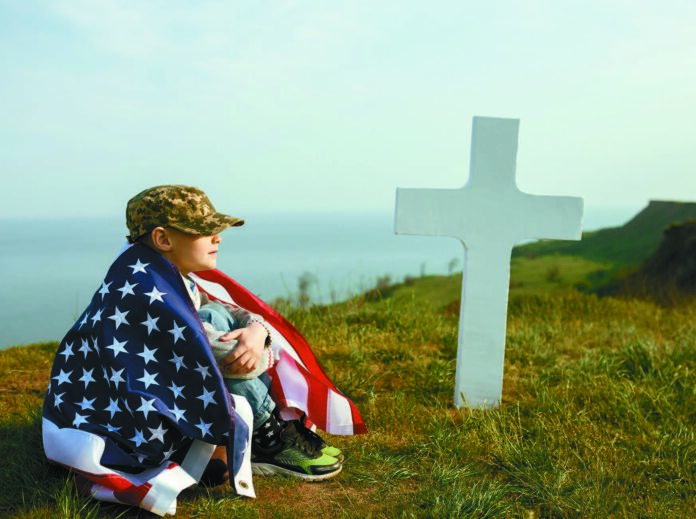This weekend, a three-dayer, marks nearing the end of school and the beginning of summer. Not just a long weekend, Memorial Day on Monday is a deeply rooted tradition dedicated to honoring and remembering the brave men and women of the United States military who made the ultimate sacrifice while serving our nation.
The meaning of Memorial Day lies in our collective remembrance. In the quiet moments of reflection, the stories shared, and the gratitude expressed, we keep the memory of these heroes alive. As you enjoy time with family and friends this Memorial Day, take time to honor the legacy of courage and sacrifice that underpins our nation’s strength and resilience. Remember those like PFC Roger McInerny Jr., who died in Vietnam on April 1, 1970.
Roger was just 19 years old when he was killed in action. He lived on 17th Avenue in Richfield, MN, and was known by many as the local paper boy. A good kid. He enlisted in the Army, firmly believing it was the right thing to do. He looked forward to coming home and planned to use the GI Bill to pursue higher education when his tour was over. Like thousands of others over many years and conflicts, his dreams ended in the carnage of combat.
He was awarded the Silver Star, the third highest award for valor, posthumously on May 13, 1970. The award read, “For gallantry in action while engaged in military operations involving conflict with an armed hostile force in the Republic of Viet Nam.” PFC McInerny’s base came under a heavy rocket, mortar, and ground attack. He moved to the perimeter of the camp to “place effective fire on the advancing enemy force.” His weapon eventually malfunctioned and he continued in hand-to-hand combat with the “hostiles.”
The origins of Memorial Day are deeply rooted in the aftermath of the Civil War, a conflict that claimed the lives of more Americans than any other armed conflict in our history. The scale of loss then left communities across the country grappling with profound grief and a strong desire to properly honor their fallen. This historical significance demands our utmost respect and reverence.
In the years following the war, spontaneous acts of remembrance began to emerge. Women’s groups in the South were among the first to organize tributes, adorning the graves of Confederate soldiers with flowers.
One of the earliest documented observances resembling modern Memorial Day occurred in Charleston, SC, on May 1, 1865. Previously enslaved African Americans organized a powerful ceremony at the Washington Race Course, a former horse racing track in Charleston, SC, that was converted into a prison camp for Union soldiers. The track’s oval was used to house prisoners, and many perished due to disease and harsh conditions, with at least 257 soldiers buried in an unmarked mass grave behind the grandstand.
The formerly enslaved people exhumed the bodies and gave them proper burials, and decorated the graves with flowers while singing patriotic hymns. They then constructed a monument in their memory. This act of profound respect and remembrance is a significant precursor to the national holiday.
In the North, various communities also began holding commemorative events. On May 5, 1866, the citizens of Waterloo, NY, became the first community to close businesses for a day dedicated to honoring fallen soldiers. This consistent and community-wide observance led General John B. Murray, a prominent citizen of Waterloo, to advocate for a national day of remembrance.
On May 5, 1868, General John A. Logan, the commander-in-chief of the Grand Army of the Republic (GAR), a veterans’ organization, issued General Order No. 11, officially establishing “Decoration Day” to be observed on May 30. In his order, Logan declared that the graves of comrades “whose bodies now lie in almost every city, village, and hamlet churchyard in the land” should be decorated with flowers. The date of May 30 was chosen not because of any specific battle anniversary but because it was a time of year when flowers would be readily available across the nation.
The first official Decoration Day was observed at Arlington National Cemetery on May 30, 1868. Thousands of people gathered to decorate the graves of Union and Confederate soldiers, symbolizing a move toward national healing and unity in remembrance of the shared sacrifice of war. The name “Decoration Day” gradually gave way to “Memorial Day,” reflecting the purpose of the holiday as a memorial to the servicemen and servicewomen whose lives were given in service to their country.
After the First World War, Memorial Day’s scope broadened to honor all Americans who have died in military service, regardless of the conflict. It became a more unified national observance, a time for reflection on the cost of freedom and the bravery of those who paid the ultimate price.
In 1968, Congress passed the Uniform Monday Holiday Act, which moved Memorial Day from May 30 to the last Monday in May, creating the three-day weekend we recognize today.
While the extended weekend provides an opportunity for recreation and leisure, we must remember the enduring meaning at the heart of Memorial Day.
The Minnesota Veterans Home in Silver Bay will host the city’s official Memorial Day Program on Monday, May 26, at 1:30 p.m. to honor, remember, and celebrate those who made the ultimate sacrifice in service to our country. Similar programs will be held throughout Arrowhead.
If you cannot attend a program, take some time Monday to reflect on the lives cut short in combat. Pause your routines, visit cemeteries and memorials, fly your flags at half-staff until noon, and participate in moments of silence to honor the fallen. Their sacrifice was not in vain, and their memory inspires future generations.
Spanish-American philosopher George Santayana wrote, “Those who do not remember the past are condemned to repeat it” in his 1905 work The Life of Reason, Volume 1: Introduction and Reason in Common Sense. This powerful and often-quoted passage reminds us, and hopefully our leaders, to remember and learn from history to avoid repeating the mistakes of our past.





